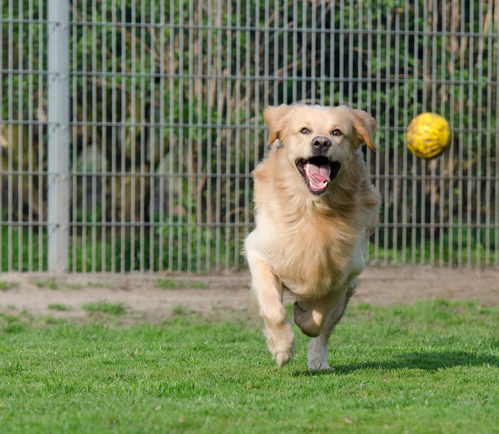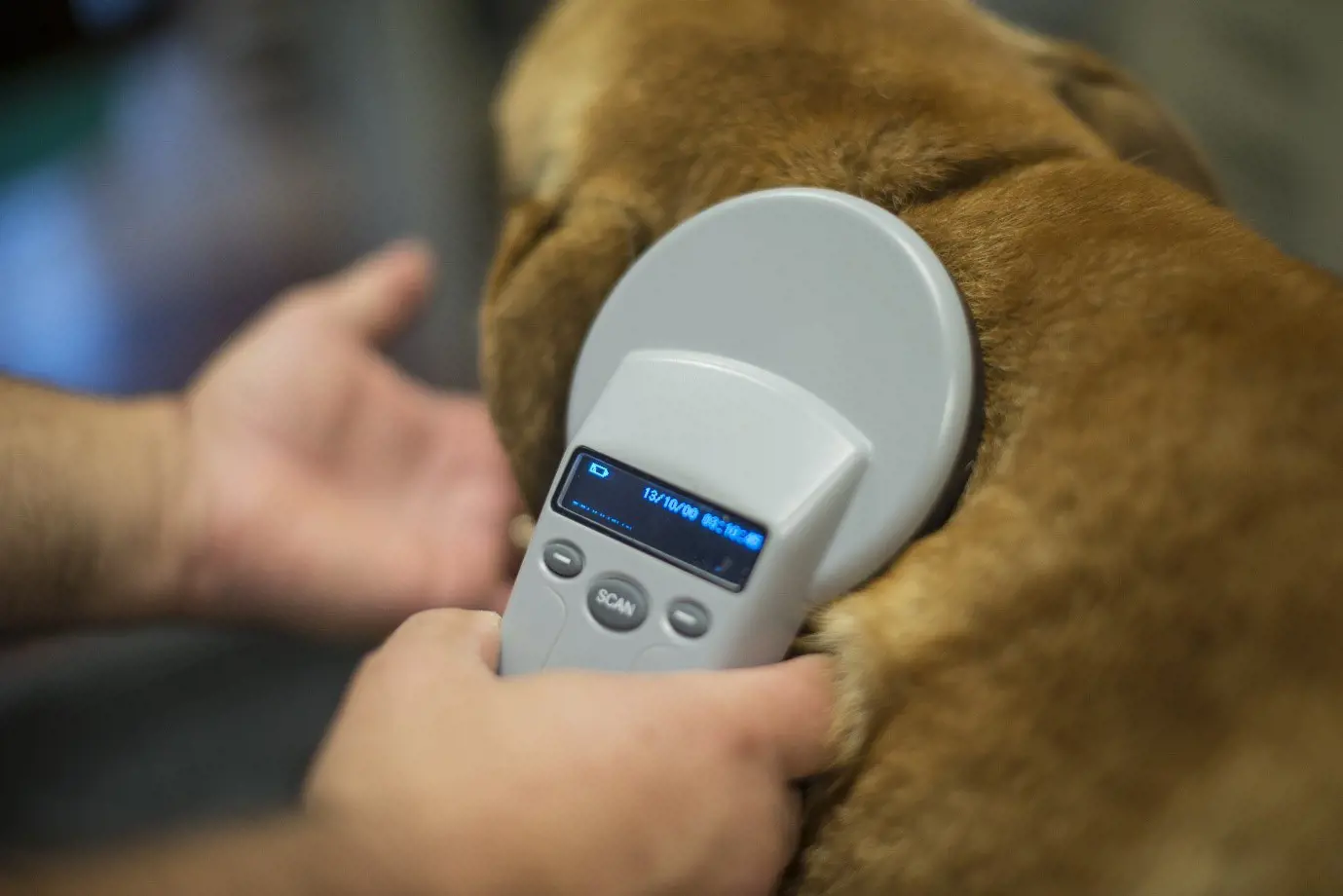How to cope with dog seizures
25th November, 2020

A seizure in a dog can be a very alarming sight for its owner. Although your beloved pooch is likely to bounce back quickly, it’s important that you know how to recognise the warning signs and take the right action.
Read on for our guide to seizures in dogs, including keeping your animal safe during an episode, and making sure it’s covered by insurance for pets.
What is a seizure?
A seizure, also known as a fit, is a sudden surge in the brain’s normal neurological activity. The brain’s cells start firing uncontrollably at a much faster rate than normal, causing the animal to lose control temporarily over its movements.
There are different types of seizures. Grand mal seizures refer to a total loss of control over the body. Your dog is likely to fall to the ground, have muscle spasms in all its limbs, and might lose control of its bladder or bowels. It could foam at the mouth, bite or snap. It might well lose consciousness completely.
Partial seizures involve just one side of the body, one limb or only the dog’s face. However, many dogs who have a partial seizure will have a grand mal seizure at a later stage.
Most animals will recover, with some never experiencing another seizure. Some, however, are prone to repeated episodes and may require ongoing treatment to prevent any damage and to enable them to lead happy, healthy lives.
If your dog has a seizure, see your vet immediately for an accurate diagnosis and treatment plan.
Remember – specialist pet insurance will cover lifelong conditions if you take the policy out before the disorder develops and renew it every year.

Are seizures dangerous?
Seizures usually last between 30 and 90 seconds, and leave no lasting damage. However, some are more severe and can even, very occasionally, be fatal. And repeated seizures can damage your dog’s brain, so it’s essential that you get effective treatment quickly.
A seizure could also be dangerous if it occurs at a tricky moment, such as when your dog is swimming. And your dog could injure itself during a seizure, or even lash out at you or members of your family. Remember – it is not in control of its actions, so try to stay calm.
Even if it is unharmed, a seizure is likely to be a very traumatic event for your dog. Giving it lots of reassurance afterwards is essential – as is getting appropriate vet treatment. Pet cover will help you cover the costs.
What is epilepsy in dogs?
The most common cause of seizures in dogs is the neurological disorder idiopathic epilepsy. You may already be aware of this condition, as it also affects humans.
Epilepsy is usually an inherited genetic condition that appears when your dog is between the ages of six months and six years old. It can also develop later, perhaps as a result of another brain condition such as a tumour or an injury.
Epilepsy is thought to affect up to about five per cent of dogs, so it’s definitely worth being aware of the condition and how to manage it.
Some puppies grow out of epilepsy, but for most, it’s a lifelong condition. It cannot be cured, but there are effective treatments available that make it possible for owners to manage the condition in most canines.
Which dogs are more prone to epilepsy?
Certain breeds are more likely to develop epilepsy than others. These include Golder Retrievers, Collies, Labradors, Beagles, Shetland Sheepdogs, Vizslas, Irish Wolfhounds, and English Springer Spaniels.
As epilepsy is often passed down through families, it’s always wise to buy your puppy from a reputable breeder, who will not breed from a dog with the condition.
Males are more likely to develop the condition than females. But any dog, no matter what breed or sex it is, can develop epilepsy, so keep an eye out for the warning signs and contact your vet with any concerns.
With pet insurance from Purely Pets, you’ve got access to a 24-hour Vet Helpline for any worries you might have.

What other conditions can cause seizures?
There are several other causes of seizures. They include conditions of the head, brain and nervous system, such as injury, tumours, encephalitis or strokes.
Some seizures start elsewhere in the body, and are the result of kidney failure, liver disease or other illnesses. High or low blood pressure can also cause the problem.
And don’t rule out that your dog could have swallowed some poison – perhaps put out to deal with a rat problem – or picked up an infection.
There are so many possible causes that it’s vital to take your dog to the vet immediately after its first seizure.
Pet insurance provides cover for vet fees, so you can get an accurate diagnosis for your pooch and start treatment without worrying about the cost.
How to spot the warning signs
Your dog is likely to behave strangely before a seizure. This period is sometimes called an ‘aura’ or the ‘pre-ictal phase’, and can last just a few seconds or several hours.
Your dog might seem scared, stressed or clingy. It could whine, pant, salivate or shake. It could appear dazed, confused, or like it’s staring into space. Its muscles might twitch, and it could even lose control of its bladder or bowels.
Your dog might also try to hide as it seeks to quieten the surge of activity in its brain. This is self-protective behaviour: its instincts are telling it to get to a safe place.
While you don’t want to let your dog out of your sight if you think a seizure is imminent, you can help your dog by getting it to lie down in a calm, dark area. Dim lights, try to lower any noise, and stay calmly by your pet’s side.
If your dog is prone to seizures, you’ll learn to recognise how it reacts and can take action accordingly. However, some dogs don’t display any warning signs. And seizures often happen at night while your dog is asleep, so you’re unlikely to notice this build-up period.
What to do when your dog has a seizure
The first time your dog has a seizure is likely to be very frightening – but the best thing you can do to help your pet is to stay calm.
You need to make sure that your dog is in a safe place. If you’re at the top of the stairs or on a river bank, for example, try to minimise the risk.
If there’s no immediate danger, don’t try to move your animal as this will increase the sensory overload taking place in its brain. Instead, clear away any hard or sharp objects that your dog might bang into during a seizure.
You might instinctively want to stroke your dog or call its name, but it’s best to reduce all external stimulus as your dog’s brain tries to restore itself. If you haven’t already done so, close the curtains, turn off lights, and switch off TVs or other sources of sound.
By keeping yourself and anybody else clear of your dog, you also reduce the chance that you will suffer an injury.
Dogs might well bite or lash out during a seizure: of course, this is absolutely unintentional. Pet insurance does provide third party liability if your dog causes an injury or damage, but obviously responsible owners want to avoid this where at all possible.
Time your dog’s seizure. If it continues for more than five minutes, you should call a vet as an emergency.
If it has a second seizure within the next few hours, you should also contact your vet straight away. Don’t try to transport your dog during a seizure unless your vet advises you to do so.
It’s also a good idea to make a note of the duration and frequency of your dog’s seizures, or even video them, so your vet can advise on the best form of treatment.

What to do after your dog has a seizure
Usually, your dog’s worst symptoms will subside within a minute or two.
Then it will be in the ‘post-ictal’ phase: it is likely to appear confused, disorientated and unhappy, perhaps walking in circles on wobbly legs or bumping into things.
This is when your dog really needs you. Be guided by what your pup wants. If it cuddles up to you, then give it lots of love and attention. If it wants to crawl away into its bed, let it do so.
Stroke it gently if it will let you and speak to it softly and reassuringly. If it has had a toilet accident during the seizure, don’t be angry with it.
Your dog might recover pretty much instantly, or take up to a day before it’s back to its usual self.
If this is your dog’s first seizure, or if it has injured itself, contact a vet. Don’t leave it and hope that it will get better on its own – early treatment is vital, especially in a young puppy, to prevent lasting damage.
What treatment is available?
Your vet will carry out extensive examinations to diagnose your dog and rule out other conditions. This will include asking you about symptoms, and taking blood or urine samples. Your vet could even order an MRI to check for any other causes.
If your vet diagnoses epilepsy, there are a few types of treatment plan available. Your vet may well prescribe anticonvulsant medication such as Phenobarbital or Imepitoin, which can reduce the frequency and severity of your pet’s seizures.
These drugs are generally effective and well tolerated by animals. If they are not sufficient, or if your dog won’t tolerate them, your vet might prescribe Potassium Bromide.
Your dog is likely to require these drugs for the rest of its life, and will also need regular blood tests to check the medication is still effective and is not causing any side effects. Never stop the treatment without consulting your vet.
If your vet diagnoses other conditions that cause seizures, such as an infection, he or she will be able to advise on the best course of treatment or action.
How can I prevent seizures in my dog?
There’s nothing you can do to prevent your dog from developing epilepsy. However, you might be able to help it to avoid the triggers that can cause a seizure.
These include reducing its stress. Changes to your dog’s routine, long car journeys and thunderstorms could all raise your dog’s anxiety levels and potentially trigger an episode.
Tiredness or lack of sleep might be another trigger, while some owners believe that certain foods can be to blame. Keeping a seizure diary can help you detect and control triggers.
Many of the conditions that cause non-epileptic seizures are at least partly preventable. Keeping your dog at the right weight, feeding it a healthy diet, and giving it lots of exercise are all vital for good general health.
This means your dog is likely to live for longer before developing the serious health conditions that could cause seizures.
Your vet can help you manage your pet’s long-term health, and lifetime pet insurance will help you cover the fees.
You can also download the tracker app from the Royal Veterinary College to help you manage the condition and keep your beloved pooch in the very best health.

Get a quote from Purely Pets today
Owning a pet with a serious, lifelong condition such as epilepsy is a huge responsibility – and the expenses can add up, too. Fortunately, pet insurance can help relieve the burden by covering the costs of vets’ fees.
Purely Pets is a specialist pet insurance provider, offering 15 levels of lifetime cover to suit your budget and your requirements. By taking it out as soon as you buy your puppy, you’ll be covered for vets’ fees of up to £15,000 per year, depending on the policy level you choose.
With a 24-hour Vet Helpline, you can get expert advice at any time of the day or night. Special diets and third party liability are included, too.
Contact the team at Purely Pets today to help keep your dog in the very best of health.
Policy benefits, features and discounts offered may very between insurance schemes or cover selected and are subject to underwriting criteria. Information contained within this article is accurate at the time of publishing but may be subject to change.
Helpful Pages
Recent Posts
Pet Insurance Quote
- 98% claims paid *
- Claims paid directly to vets
- 24/7 vet video consultations
- Interest free monthly payments




